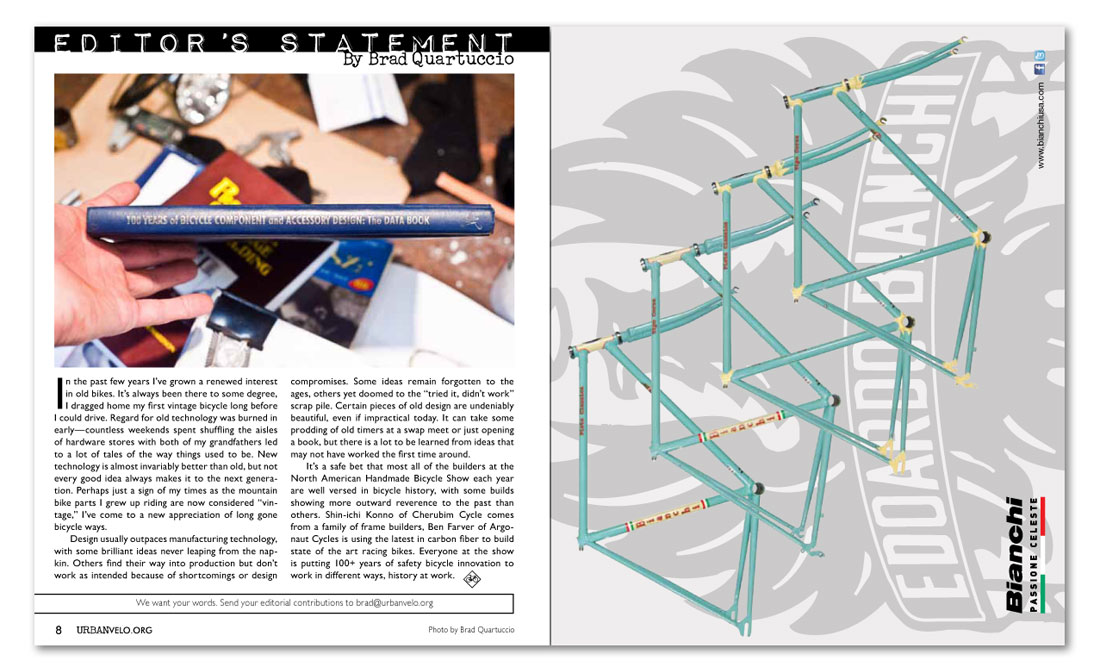


Editor's Statement
In the past few years I’ve grown a renewed interest in old bikes. It’s always been there to some degree, I dragged home my first vintage bicycle long before I could drive. Regard for old technology was burned in early—countless weekends spent shuffling the aisles of hardware stores with both of my grandfathers led to a lot of tales of the way things used to be. New technology is almost invariably better than old, but not every good idea always makes it to the next generation. Perhaps just a sign of my times as the mountain bike parts I grew up riding are now considered “vintage,” I’ve come to a new appreciation of long gone bicycle ways.
Design usually outpaces manufacturing technology, with some brilliant ideas never leaping from the napkin. Others find their way into production but don’t work as intended because of shortcomings or design compromises. Some ideas remain forgotten to the ages, others yet doomed to the “tried it, didn’t work” scrap pile. Certain pieces of old design are undeniably beautiful, even if impractical today. It can take some prodding of old timers at a swap meet or just opening a book, but there is a lot to be learned from ideas that may not have worked the first time around.
It’s a safe bet that most all of the builders at the North American Handmade Bicycle Show each year are well versed in bicycle history, with some builds showing more outward reverence to the past than others. Shin-ichi Konno of Cherubim Cycle comes from a family of frame builders, Ben Farver of Argonaut Cycles is using the latest in carbon fiber to build state of the art racing bikes. Everyone at the show is putting 100+ years of safety bicycle innovation to work in different ways, history at work.
Bianchi